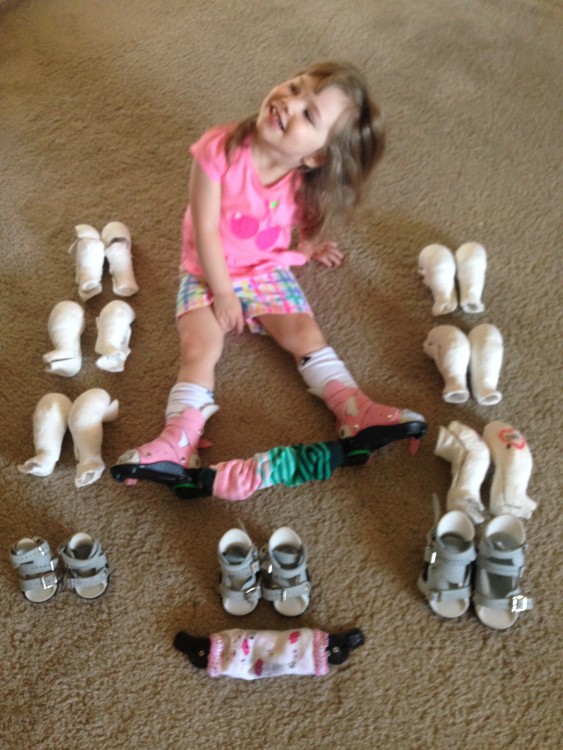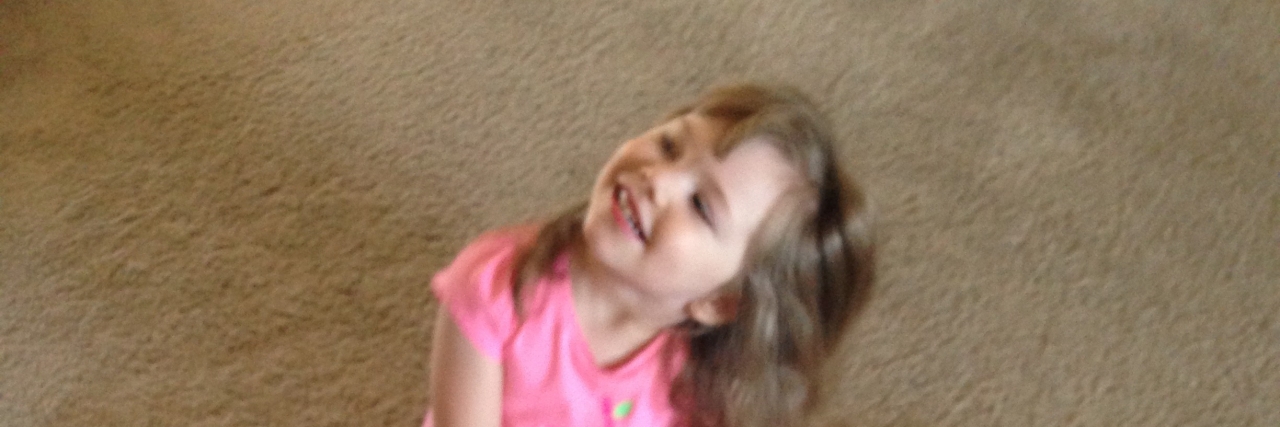When a Stranger Said My Daughter Had 'Forrest Gump Legs'
When my daughter was born with bilateral club feet, the hardest part for me was the look of shock and instant vilification on stranger’s faces when they noticed her legs. The comments and whispers ran a close second, though.
“What a cute baby! She looks just like… *gasp*”
“Oh my God! What happened to her legs?”
“Looks like someone had a bad fall!”
“She’s got Forrest Gump legs!”
Sometimes I could laugh and joke about it:
“Yeah, you apparently have to watch them all the time. They’re quick!”
“She decided to try the expert level ski slope.”
Other times, I couldn’t. Every time we went out in public was a crapshoot. Some days were OK, and we didn’t get too many awkward stares, comments, or questions. Some days were full of them. The one certainty was that at soon as I started the car, I tried to brace (no pun intended) myself to keep it together.
Club feet (a.k.a. talipes equinovarus) is a fairly common birth defect, as far as the odds game goes. Currently it is believed that 1 in every 1,000 babies are born with it, which are the same odds for Down syndrome for a woman 30 years old. It is twice as common in males than females, and the exact cause remains a mystery.
My husband and I found out our little one was one of those “1 in 1,000” during our 18-week anatomy scan. Everything was going perfectly. I had researched extensively (as most first time moms do) about what to expect during the scan. I had a mental checklist of things to look for, signs of illnesses and birth defects, how to tell the difference in gender, everything. As the technician went over our little baby, I was so excited that it seemed like everything was one exciting blur. I stared at the screen in amazement, barely hearing the technician. My brain was so focused on finding out gender that although I heard her, it was a blur.
“Plenty of fluid, baby’s head measures great, nuchal fold looks good, nasal bone, here’s her heart!, kidneys working great, it’s a girl! You didn’t do anything wrong, but there’s something here…”
…and that’s when I snapped to full attention. The technician pointed to the screen, and there it was. My baby’s leg, with the foot curled up, almost like she had stepped on her ankle and it was contorted up. The other leg was exactly the same.
The next 22 weeks were full of confusion, anxiety, shame, fear, guilt, and a multitude of other emotions. There were the typical new-mom-to-be jitters of excitement and anticipation, but they were overshadowed by an enormous cloud of just sheer helplessness and the unknown. I had never known anyone with club feet. It didn’t run in either side of mine or my husband’s family, and I had no warning that it was a possibility.
The scariest part for me was wondering if there was something underlying the club feet. I decided against any kind of genetic testing, and I was constantly put into fear with every following sonogram, because all the technicians would say that because I refused testing, they couldn’t know if there was anything going on aside from her feet. Nobody bothered to reassure me that it was probably just her feet, and not to worry. I left each appointment feeling like a failure and a terrible mother, even before my baby had taken her first breath.

When she was 3 days old we started the corrective process, using the Ponsetti method. It’s a long and often difficult road, physically and emotionally. The first phase is the actual correction of the club feet, which involved manipulating her feet towards the correct position, and then applying a plaster cast to hold the correction. She got a new cast every week, with each one moving her foot more and more, little by little.
After the 5th cast, she had a procedure called an Achilles Tenotomy. The Achilles’ tendon is shortened in children with club feet, so in order to bring it back to the length needed for full range of motion, they cut the Achilles’ tendon. Then the foot can be stretched and the tendon grows back longer. Our orthopedic doctor did the procedure in the office; some do them at hospitals. It was absolutely horrible. Our doctor is awesome, and I don’t mean that as a slight against him, but as a mother, it was the most heartbreaking moment for me. He had to do the procedure without anesthesia, because it makes it more difficult to cut properly. They numb the area immediately afterwards, but those few seconds were unbelievably long for me. I felt sick. I actually almost threw up on my baby, but thankfully I held it together. Once she was numbed, she got her last set of casts on.
That took about 8 weeks. Then we entered the bracing stage, which is what we’ve been doing for the last 2.5 years, and will continue to have to do for probably another 2-3 years. Bracing is done with special boots that either lace or buckle up, which are then connected on the bottom of the boots by a metal bar. It keeps the feet in a locked position in order to prevent a relapse of the club feet. Initially we had to keep her in the boots and bar for 23 hours a day. She was slowly weaned down, so now we only have to have her wear them at night.
I cannot tell you how happy I am that we no longer have to have any casts or bracing when we go out. It wasn’t because I was ashamed of her or embarrassed. It was because of grown adults — adults that formed their own opinion without even bothering to ask. Adults that immediately though of me as a neglectful (or worse, abusive) mother and had no reservations about telling me so.
The way we were treated by other people broke my heart and infuriated me. The comments and jokes were nothing short of cruel, and I am grateful my daughter was too little to understand what was said. I’m glad she won’t remember the looks that people gave us. Thankfully, we did have some wonderful people talk to us and either ask politely what happened, or share their own story about someone with club feet. I can’t put into words how those people gave me the strength, encouragement, and reassurance that I was an awesome mom. I actually had one lady quietly say “You’re an awesome mom, and you’re doing great” to me in passing, as I was struggling to unhook my daughter’s brace so I could pull her out of the shopping cart. I will never forget that, and how right before her comment, I was on the verge of crying with frustration and exhaustion.
Now, my daughter looks like any other child. Unless I told you, you’d never know she has something going on with her feet. But I still hope for more understanding from people and less judging. More positive comments instead of snide, hurtful ones. More smiles than stares.
So if you’re out and about and happen to see a baby with casts or braces on their legs, there’s a good chance they have club feet. There’s a very good chance that the parent with them would appreciate being told they’re doing a fantastic job, or even just seeing a friendly smile. They don’t need jokes, they don’t need assumptions.
As the old saying goes, you can’t understand what someone else is going through until you walk a mile in their shoes.

